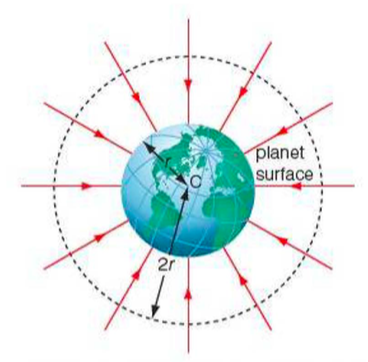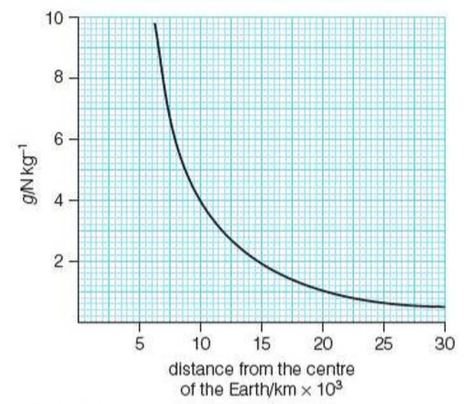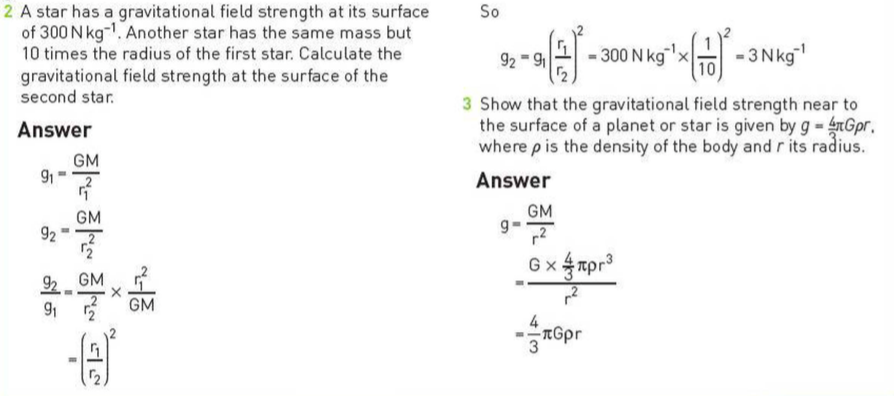Gravitational Fields
Summary
⇒ A gravitational field is a region in which a massive object experiences a gravitational force
⇒ Any object with mass produces a gravitational field, but we usually use the term to describe the region of space around large celestial objects such as galaxies, stars, planets, and moons
⇒ The gravitational field strength in a region of space is defined as:

⇒ Where g is the field strength measured in Nkg-1 and F is the gravitational force in N acting on a mass m in kg
Uniform Fields
⇒ Near the surface of a planet, the gravitational field is very nearly uniform, which means that the field is of the same strength and direction everywhere

⇒ (a) illustrates a uniform field
- The field lines show the direction of the gravitational force on an object,and the spacing of the lines gives a measure of the strength of the field
⇒ (b) shows another gravitational field, which is half the strength of the field in (a)
⇒ You should remember that the spacing of the lines is chosen just for illustrative purposes - another person might have represented the field strengths in these diagrams with a different separation of the field lines
Radial Fields

⇒ This shows the shape of a gravitational field near to Earth; this is a radial field
⇒ Here the field lines all point towards the centre of the planet
⇒ This is why we can use Newton's law of gravity to calculate the gravitational forces between two planets
⇒ The field is exactly the same shape as it would have been if all of the mass of the planet were concentrated at its centre, C
⇒ You can also see from this image that the gravitational field decreases in strength with increasing distance from the centre of the planet
- The field lines at a distance of 2r from the centre of the planet are further apart than they are at distance r, which is the planet's surface
Formula
⇒ We can also produce a formula to describe the field strength close to a planet
⇒ From Newton's law of gravity we know that:

⇒ Also, if m2 is the mass of a small object close to the surface of the planet, we know that:

⇒ Note that we often use a capital M to describe the mass of a large object such as a star or planet - so using M as the mass of a planet, and r as the distance away from the centre of the planet, we have:


⇒ This shows how the gravitational field strength varies with height above the Earth
⇒ For most planets, treating them as uniform spheres works as a good approximation
- For most objects with a mass larger than 1021kg, the forces of gravity overcome the massive forces on the rocks to turn the planet into a sphere
- However, smaller moons and minor planets can have irregular shapes, so Newton's law of gravity cannot be used to simply predict fields near them, but it can be used accurately at large distances
Example


Extra
⇒ Also see our notes on: